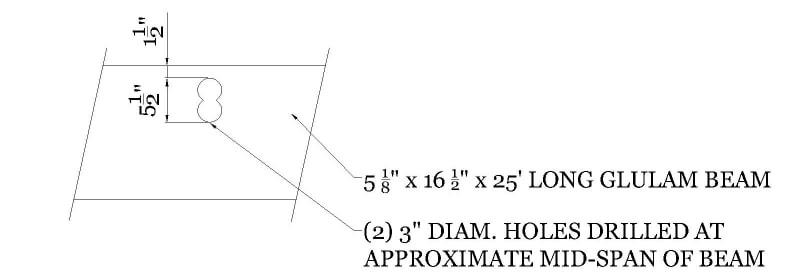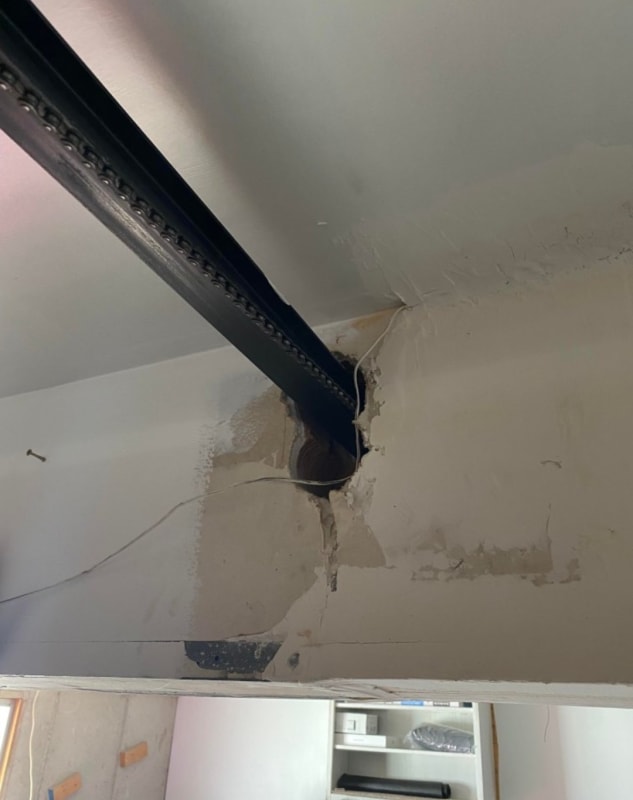SarBear
Structural
- Mar 14, 2022
- 38
Hi all, wanted to get some feedback on this. A potential client approached me saying that they are wanting to buy this home, but the inspector noticed that the 5 1/8" x 16 1/2" glulam beam in the garage has some large holes drilled through it for the garage door opener. See the drawing below for the approximate dimensions of what's going on. The beam is about 25' long and is bearing the exterior wall of the second floor above. The selling agent has said that their engineer will provide a design where there are steel plates on each side of the beam that bridge the gap where the holes are and will have bolts going through. That sounds like a fine solution to me, but I'm not smart enough to be able to prove that this fix actually works.
The buyer has asked me to provide a second opinion since he is not sure about the proposed fix. The other engineer hasn't provided any drawings or calculations yet, so I'm not sure whether the fix will be legit or super janky. What do you all think? Is the steel plate idea doable? Is it provable? My feeling is that the solution is doable, but I'm too stupid to figure out how to prove that it works.


The buyer has asked me to provide a second opinion since he is not sure about the proposed fix. The other engineer hasn't provided any drawings or calculations yet, so I'm not sure whether the fix will be legit or super janky. What do you all think? Is the steel plate idea doable? Is it provable? My feeling is that the solution is doable, but I'm too stupid to figure out how to prove that it works.


